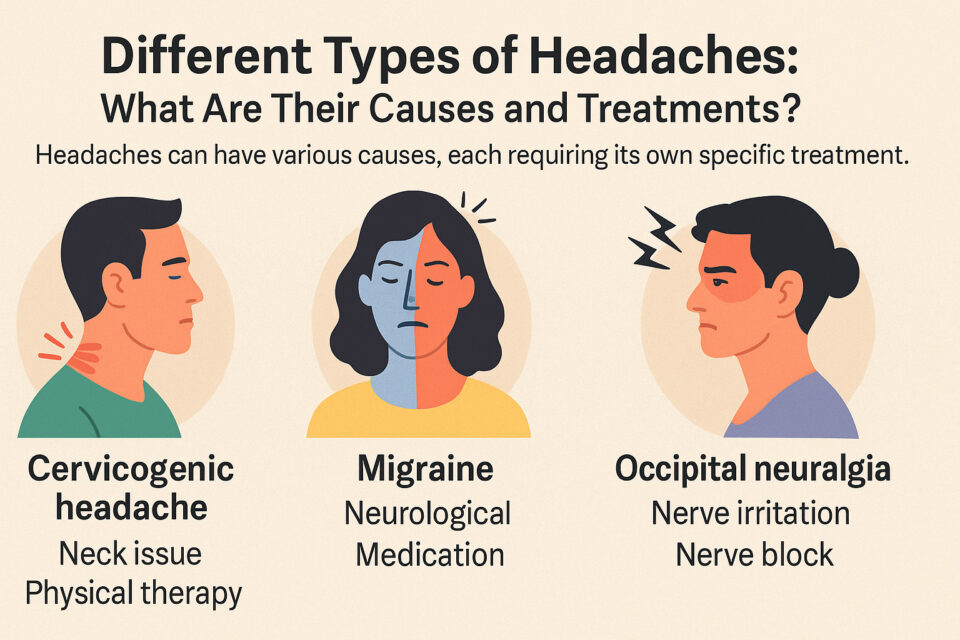Headache Types Explained by Neurologists: Understanding Pain in the Neck, Behind the Eyes, or on One Side of the Head — and How to Treat Each One
Not every headache is alike, learn what your pain is trying to say. Some people feel pain behind the eyes, others at the back of the neck, and some only on one side of the head. According to neurologists, every type of headache has a different cause, such as stress, nerve issues, posture problems, or even eyesight strain. The right treatment for a headache depends on where and how it hurts. In this guide, we explain the most common types of headaches, what triggers them, and how to manage them effectively with the right care.
Headache Types: What Experts Say
Today, headaches have become a common issue, but most people don’t know the real causes or types behind them. Social media is flooded with videos making different claims about headache types and home remedies.
According to Dr. there are different types of headaches, and each one has a unique cause, symptom, and treatment. He explained that many people treat all headaches the same and take random medicine but that’s not the right approach.
What Different Types of Headache Pain Tell You
Dr. explained that each type of headache shows up in a different way:
Migraine: If the pain is on one side of the head, comes with nausea, and you feel discomfort from bright lights, it may be a migraine.
Cluster Headache: If there’s pain around the eyes along with watery eyes, this could be a cluster headache.
Trigeminal Headache: If the pain is on one side and the eye on that side waters, it may be a trigeminal headache.
More Types of Headache and What They Mean
Cervicogenic Headache: If the pain starts from the neck and moves up toward the head, it could be a cervicogenic headache. This type of headache is related to nerves in the neck.
New Daily Persistent Headache (NDPH): If there’s a constant pressure-like pain in the head and neck that doesn’t go away, it may be NDPH — a type of headache that starts suddenly and stays persistent.
Lifestyle Changes Are a Must
Dr. says that to prevent these types of headaches, medicine alone isn’t enough, lifestyle changes are also important.
Dr Advises:
1. Limit the use of mobile phones and screens.
2. Eat on time and maintain a balanced diet.
3. Get 7 to 8 hours of proper sleep.
4. Completely avoid alcohol and smoking.
5. Do light exercises regularly.
6. Try to stay away from stress and anxiety.
These simple changes can help reduce the chances of recurring or chronic headaches.
Early Treatment Is Important – Don’t Ignore Headaches
Dr. says we should never ignore headaches that happen often or last a long time. If the pain keeps coming back or follows the same pattern for days or weeks, it’s a clear sign that your body needs help. In such cases, consulting a nearby neurologist or neuro physician is very important.
Early diagnosis helps in finding the root cause of the headache and prevents it from becoming a serious health issue later. Many people make the mistake of taking painkillers without knowing the actual problem. It might help for a short time, but it can be harmful later.
Dr. strongly advises that headaches are not just a small discomfort — they are warning signs from your body. Whether it’s migraine, cluster headache, cervical pain, or any other type, the right knowledge and timely treatment can make a big difference.
By staying alert, taking proper medical advice, and following a healthy lifestyle, you can keep most headaches under control and live a pain-free life.

